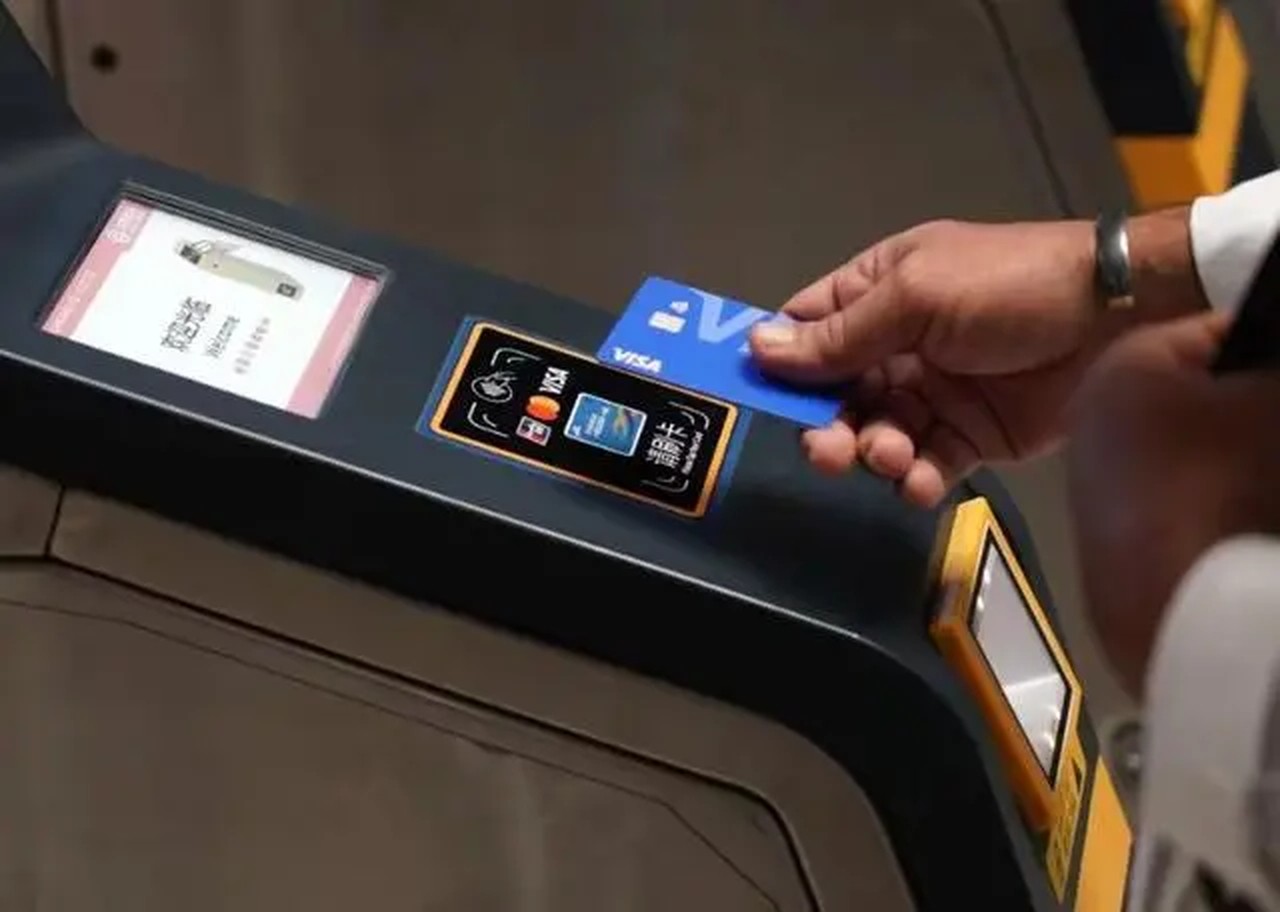
On September 13th, 27 rail transit lines in Beijing (including 2 airport lines, Xijiao Line, and Yizhuang T1 Line), with 836 kilometers and 490 stations, achieved the conditions of "full network, full time, and full gate" with non-contact card swiping for overseas bank cards (referred to as foreign cards). In addition, the S2 suburban railway line also met the conditions simultaneously. Foreign passengers can use their foreign card to take the subway without purchasing tickets.
On September 13th, contactless card swiping for Mastercard and Visa issued overseas was officially launched. Passengers holding an external card to ride on Beijing rail transit only need to swipe the card in the designated area of the entrance and exit gate to enter and exit the station. The backend automatically completes the itinerary billing and cooperates with the issuing bank to deduct fees. When the card is being checked at the gate, the automatic ticketing system of Beijing Rail Transit will confirm the legality and validity of the card to the issuing bank through online means. When the verification is correct, the gate will release the card.
It is reported that in the future, JCB external card swipe card gate, super SIM card digital RMB hard wallet gate, and Yitong APP international version that supports overseas mobile phone registration and foreign passenger identity authentication will also be opened, providing more travel options for foreign passengers.
On September 13th, 27 rail transit lines in Beijing (including 2 airport lines, Xijiao Line, and Yizhuang T1 Line), with 836 kilometers and 490 stations, achieved the conditions of "full network, full time, and full gate" with non-contact card swiping for overseas bank cards (referred to as foreign cards). In addition, the S2 suburban railway line also met the conditions simultaneously. Foreign passengers can use their foreign card to take the subway without purchasing tickets.
On September 13th, contactless card swiping for Mastercard and Visa issued overseas was officially launched. Passengers holding an external card to ride on Beijing rail transit only need to swipe the card in the designated area of the entrance and exit gate to enter and exit the station. The backend automatically completes the itinerary billing and cooperates with the issuing bank to deduct fees. When the card is being checked at the gate, the automatic ticketing system of Beijing Rail Transit will confirm the legality and validity of the card to the issuing bank through online means. When the verification is correct, the gate will release the card.
It is reported that in the future, JCB external card swipe card gate, super SIM card digital RMB hard wallet gate, and Yitong APP international version that supports overseas mobile phone registration and foreign passenger identity authentication will also be opened, providing more travel options for foreign passengers.
In addition to foreign cards, foreign passengers can also purchase prepaid cards for transportation. During the China International Fair for Trade in Services, Beijing One Card Company showcased its BEIJING PASS. Currently, this transportation card designed to cater to the usage habits of foreign visitors to China has been sold at 15 locations including the Capital International Airport and Beijing Railway Station. The BEIJING PASS standard card is priced at 20 yuan and can be recharged offline at the Beijing rail transit manual service window or self-service device. It can also be recharged online through the "SilkPass" app.
In addition, in order to further meet the travel needs of foreign passengers, the transportation department is piloting the installation of translation machines at 34 stations including Tiananmen West Station on Line 1, Dongzhimen Station on Line 2, and all stations on the Daxing Airport Line, supporting the translation of multiple countries' voices into speech or text, and achieving barrier free and smooth communication with passengers.